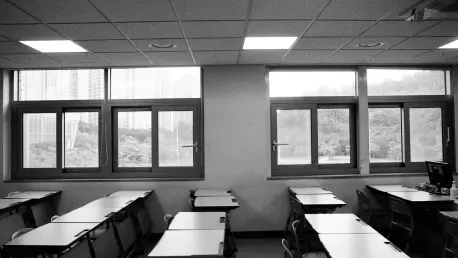In recent years, Hamilton Township Public Schools in New Jersey has confronted the pervasive issue of chronic absenteeism head-on, a challenge that intensified during the COVID-19 pandemic. This district, historically contending with absenteeism rates surpassing state averages, embarked on a transformative journey to reverse this trend. During the 2016-17 school year, an overwhelming majority of Hamilton Township schools exceeded state average absenteeism rates. Recognizing the need for change, the district devised and executed a strategic plan that focused on a sustained reduction in absenteeism rates. This initiative, significantly supported by the Foundation for Educational Administration (FEA), was pivotal in reshaping the educational landscape within the district, achieving remarkable improvements. In 2025, only two out of the original 21 schools were still above the statewide average for absenteeism. The dramatic success of Hamilton Township’s efforts offers valuable insights into the complex dynamics of educational reform and the power of strategic intervention.
Financial Backing and Strategic Implementation
The turnaround in Hamilton Township was significantly bolstered by the financial backing and collaboration with the Foundation for Educational Administration. The FEA played a crucial role by securing a $10,000 grant from the Princeton Area Community Foundation in 2018. This grant laid the groundwork for developing a comprehensive plan to tackle absenteeism. Further sustaining this effort, a five-year $30,000 grant was awarded, facilitating the plan’s implementation across the district. The importance of financial resources in educational reform cannot be overstated; the strategic use of these funds allowed the district to employ innovative and targeted strategies. Under the FEA’s guidance, the district implemented a robust framework that included hiring coaches with expertise in various domains. These coaches visited schools monthly, providing invaluable guidance on forming “Be There Teams.” The teams, comprising school leaders, counselors, teachers, and nurses, were instrumental in creating tailored action plans based on a tiered approach.
The methodology focused on personalized interventions, effectively addressing individual student needs while also incorporating broader systemic changes. This approach allowed for a targeted reduction in chronic absenteeism across the district. Between the program’s initiation in the 2018-19 academic year and the onset of the COVID-19 pandemic in March 2020, significant strides were made in improving attendance rates. Although the pandemic posed significant challenges with a shift to virtual learning environments, the strategic initiatives laid the groundwork for an effective response. The district witnessed fluctuations in attendance rates during school reopening in the 2021-22 academic year. However, the resumption of face-to-face interactions facilitated a recovery in attendance figures, underscoring the impact of direct engagement in educational settings.
The Role of Community and Positive School Climate
A key element in Hamilton Township’s strategy was its focus on fostering a positive and inclusive school climate, a factor the district recognized as crucial for improving attendance. An exemplary case is Sayen Elementary School, where former principal Diana Vasil emphasized the importance of community involvement in fostering a nurturing environment. The school’s pre-established “Be There Team” worked diligently to enhance the school climate by revisiting their mission statement and strengthening social-emotional learning programs. This focus on refining school culture involved engaging a broad array of stakeholders, including parents, teachers, and students. Their collaborative efforts not only improved professional norms among staff but also strengthened trust and communication within the school community.
The ongoing collaboration between educators and families, supported by FEA coaches, proved effective in reducing absenteeism rates at Sayen Elementary. By the 2024-25 school year, absenteeism dropped to 6.2%, surpassing pre-pandemic levels despite an interim spike due to COVID-19. This case illustrates that when schools prioritize inclusivity and responsiveness to cultural diversity, they create environments conducive to student engagement and attendance. Hamilton Township’s emphasis on community involvement and positive school climate becomes evident as a critical factor in their success story. Through these efforts, the district demonstrated that combating absenteeism requires more than just rules and policies—it involves creating a supportive and engaging atmosphere that encourages students to be present and participate.
Lessons Learned and Future Directions
In recent years, Hamilton Township Public Schools in New Jersey tackled the persistent issue of chronic absenteeism, which worsened during the COVID-19 pandemic. Historically, this district faced absenteeism rates that frequently exceeded state averages. However, during the 2016-17 school year, the majority of its schools surpassed these averages. Realizing the urgent need for change, Hamilton Township developed and implemented a strategic plan aimed at consistently reducing absenteeism rates. Supported by the Foundation for Educational Administration (FEA), this initiative was crucial in transforming the district’s educational landscape and achieving significant improvements. By 2025, a remarkable change was evident, with only two out of the initial 21 schools still above the statewide absenteeism average. The success of Hamilton Township’s endeavors provides meaningful insights into educational reform’s complex dynamics and demonstrates the power of deliberate strategic intervention.









